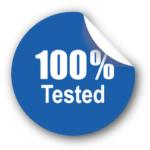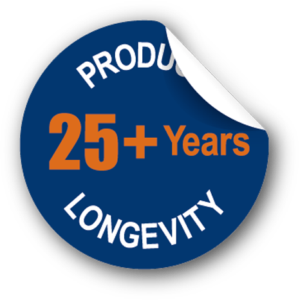Mercury Reed Relays
In many respects mercury wetted reed relays were a great controllable switching device. As with a ‘dry’ reed relay, the contacts were sealed in a glass tube so were not exposed to the atmosphere. The switch was effectively closed by a drop of mercury (also present within the tube), making the contact resistance very low.
There was no ‘switch bounce’ when the contacts closed, which can be highly beneficial in digital electronic circuits. They could also switch relatively high power, up to a few tens of Watts, and cope with a continuous current of 3A. And as the tube was often filled with pressurized Nitrogen, switching 500V was possible. Moreover, for low level loads (and because the contacts don’t wear), 100 million to over 1 billion operations could be expected in the relays lifetime.
However, the device’s main feature is also the reason for its demise. Mercury is a bio-accumulative toxic pollutant which, when released into the environment, can accumulate in waterways, for example, and convert into methylmercury, which can affect the brain if it enters the bloodstream.

Environmental and public health concerns over mercury and other substances in the 1990s led to the Restriction of Hazardous Substances Directive (RoHS) in 2000. As well as mercury, it restricted the use of three other elements – lead, cadmium and chromium (in its hexavalent variety) – and six compounds.
To comply with the restriction, mercury reed switch manufacturers have, during recent years, reduced the volume of mercury in their products to keep the %-by-weight below a threshold so they could continue to be used in mainstream electronics. Most recently though the European Commission has stated:
“The EU [has] banned mercury-containing batteries, thermometers, barometers and blood pressure monitors. Mercury is also no longer allowed in most switches and relays found in electronic equipment...”
European Commission

Accordingly, Pickering no longer purchases mercury wetted reed switches or manufactures relays that use the switches. However, some exceptions may apply, such as replacement parts in some types of specialist equipment. To discuss if this is possible, please email techsales@pickeringrelay.com, or call +44 (0) 1255 428141.
Alternatives to Mercury Wetted Reed Relays
The ban on the use of mercury is completely understandable, meaning a highly capable type of reed relay is now obsolete. However, while above we praised the benefits of the mercury wetted reed relay, was it all roses? No, they did have a few drawbacks:
- A relatively slow switch speed – often more than 2ms.
- Low temperature operation is limited by mercury’s melting point (circa -38˚C)
- Form factor: Relatively large switches and therefore relay bodies.
- Orientation: Older devices had to be kept within about 30 degrees of vertical, though more recent devices can work in any orientation.
Despite these drawbacks, the devices were hugely popular in the 1970s and 80s. They were used extensively in automatic test equipment (ATE) systems, for example, where their shortcomings were not an issue, with the possible exception of (long) switching times as they limited the speed at which the ATE could run. They were also used extensively in medical and industrial control applications.
Also, if you go back three or four decades, there wasn’t really a sound alternative. The quality of reed switches in the 1970s and 80s was very low compared to today’s devices. Specifically, plating methods and materials of the time were poor, which resulted in high contact resistance, and switch manufacturers employed little if any quality control. Pickering, and all other OEMs using the switches, therefore had to vet all incoming parts, test them and use only the best.
Today’s Alternatives
Thankfully, reed switch manufacturing has improved considerably in recent decades. In particular, instrumentation grade, sputtered ruthenium switches are a viable alternative to mercury ones, boasting:
- Low contact resistance and good through-life stability (when used in spec)
- Millions, and sometimes billions, of operations are possible for low loads
- Fast switching times (0.1 to 0.5ms is typical).
- Smaller form factor, making possible high density switching matrices for use in ATE systems, for example.
A major advantage of the mercury wetted switch was of course its ability to switch high power. Today, dry reed relays are available with higher switch ratings than some mercury devices. For instance, in March 2024, Pickering introduced its Series 144, featuring an impressive 80W power rating, while stacking on a compact 0.25-inch pitch. The SIP (single-in-line-package) reed relay offers a switching current of up to 2A, delivering up to 60W, or 1A for up to 80W, with a continuous carry current of up to 3A. Additionally, it boasts high-voltage capability, with a switching voltage of 1kVDC up to 10W and up to 3kV stand-off.
As for the issue of switch bounce, this can be (and has always been) worked around by good engineering practices and allowing a ‘settling time’. To this end, Pickering’s dry reed relay datasheets include an ‘Operate time inc bounce (max)’ figure. In data acquisition and ATE applications, waiting for the contacts to settle minimizing the risk of false readings. And in digital circuits, waiting the operate time prevents false rising and falling edges feeding into logic circuitry.
Lastly, cost. If wetted reed relays were still available as new, off-the-shelf devices they would cost about 100 times more than an equivalent dry reed relay.
Suggested Relays
Series 144 – 80 W High Power
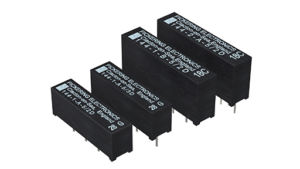
2 A switching at up to 60 W, or 1 A switching up to 80 W, with a continuous carry current of up to 3 Amps. High-voltage capability, with a switching voltage of 1000VDC up to 10W and up to 3kV standoff. 1 or 2 Form A (energize to make) or 1 Form B (energize to break) configurations. 5 , 12 or 24 V coils.
Series 114 – 40 W High Power
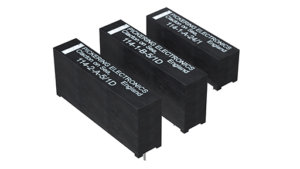
1 A switching at up to 40 W, carrying 3 A. Form A (energize to make) or Form B (energize to break) configurations. 3, 5, 12 or 24 V coils. Suitable for high power applications and in many cases, may be used as an alternative to mercury wetted reed relays.
Series 100HC
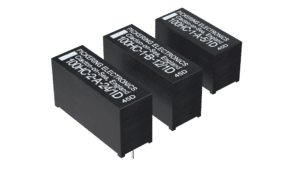
1 A switching at up to 40 W. High coil resistance of up to 6000 Ω for low power consumption. Form A (energise to make) or Form B (energise to break) configurations. 5 , 12 or 24 V coils.
Mercury Wetted Relay Data Sheet Archive
Whilst Pickering will no longer be creating new mercury relays and have thus removed information regarding them on our standard data sheets, we wanted to keep an archive available for historic applications.



